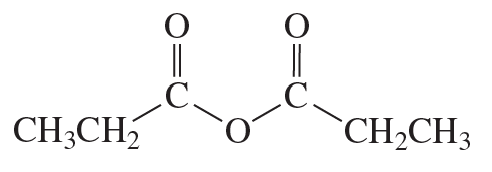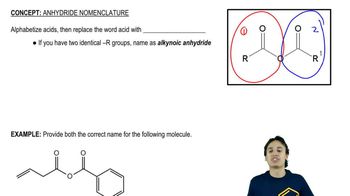Textbook Question
Provide a molecular structure that corresponds to the given name.
(a) benzoic propanoic anhydride

 Verified step by step guidance
Verified step by step guidance Verified video answer for a similar problem:
Verified video answer for a similar problem:



 3:35m
3:35mMaster Anhydride Nomenclature with a bite sized video explanation from Johnny
Start learning